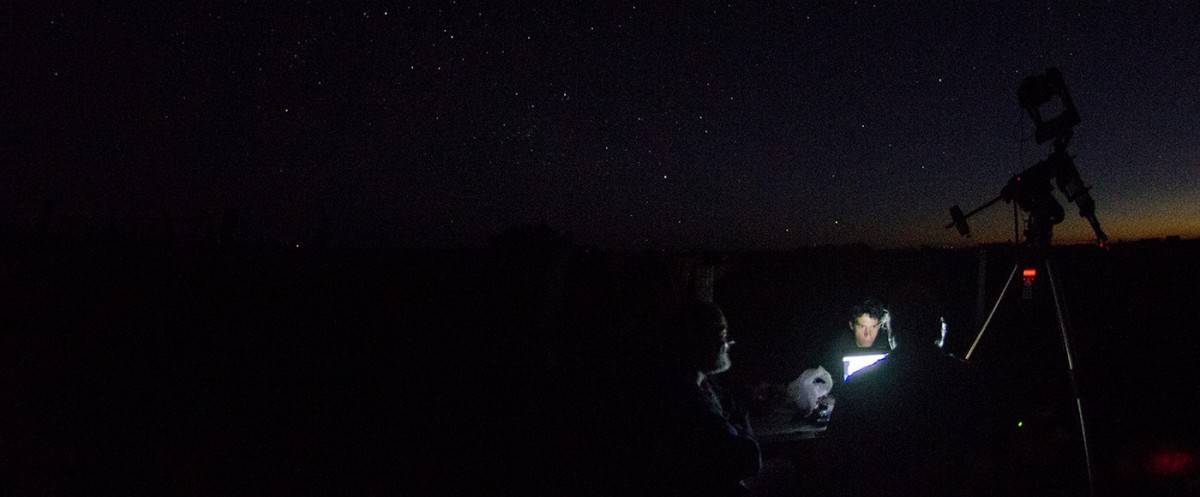We are conducting a project to make available panoramas of the night sky of the southern hemisphere, based on a mosaic of hundred of photographs. Each allsky panorama is a giant picture composed by hundreds of high-resolution photos taken in the course of one night. The panoramas are accessible with a web-browser and the public is able to zoom on them and to see the sky with better quality than the naked eye. We are preparing 4 sets of panoramas corresponding to the four seasons.
The individual images are taken with a 16 Mpixels DLSR camera mounted on a Gigapan EPIC robotic camera mounts. These devices and a autoguiding telescope are mounted in a equatorial telescope mount, which allows us to have exposure of several tens seconds. The images are then processed and stitched to create the gigantic panorama, with typical weight of several GBytes.
In addition to the allsky panoramas, we embedded higher resolution images of specific regions of interest such as: emission nebulae and dark, open and globular clusters and galaxies; which can be zoomed.
The photographs have been acquiring since December 2014 in a dark place in the countryside of Uruguay with a low light pollution; which allows us to achieve deep sky objects.
These panoramas will be available on a website and can be accessed with any browser. The public can browse the entire allsky panorama or to make a zoom into an area where one can see many deep sky objects.
This tool will be available for teaching purposes, astronomy popularization or introductory research. Teacher guides will be developed for educational activities at different educational levels.
While there are similar projects like Google Sky, the methodology used to generate the giant panoramas allows a much more realistic view, with a background of continuous sky without sharp edges. Furthermore, while the planetarium software is based on drawings of the stars, our panoramas are based on real images.
This is the first project with these characteristics; we hope it will become a reference to browsable allsky images with many web visitors.
The full poster can be downloaded from here.
Authors: Gonzalo Tancredi, Fernando Da Rosa, Fernando Gomez, Santiago Roland, Luciano Almenares
Participating institutes:
Departamento de Astronomía, Facultad de Ciencias, UdelaR, Uruguay.
Facultad de Información y Comunicación UdelaR, Uruguay
Observatorio Astronómico Los Molinos, D2C2, MEC, Uruguay
Support from Agencia Nacional de Investigación Innovación, Uruguay
